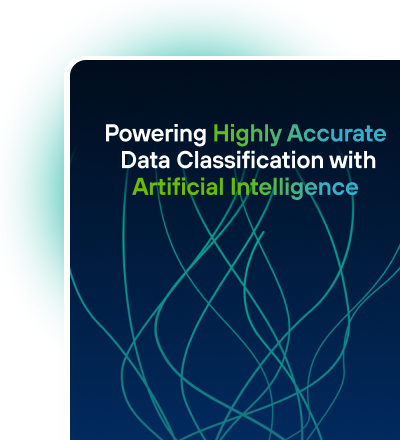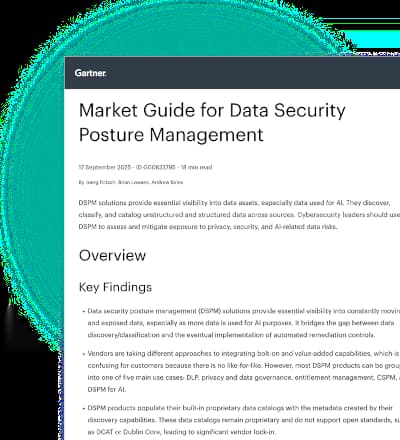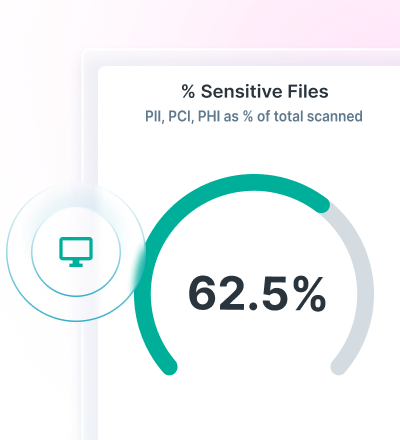1.2万多客户的选择不会错










































以闪电般的速度查找并编目企业中的数据。
Forcepoint Data Classification 使用 AI Mesh 提供高度准确的数据分类。 其网络化 AI 架构依赖小语言模型和高级 AI 组件,以提高效率并减少误报。


Gartner®: Market Guide for Data Security Posture Management
In their first analysis of the new DSPM security category, Gartner® identifies the five main use cases, breaks down DSPM features and explores the requirements for securing GenAI.
为何选择 Forcepoint Data Classification?
对多个来源的数据进行分类,并使用 AI Mesh 不断提高其准确性和效率,为组织节省宝贵的时间和资源。
覆盖业内最广泛的数据类型,有助于简化合规,同时为组织数据提供更好的保护。
与 Data Loss Prevention (DLP) 集成,可选择 Data Classification 的要求和标准,并轻松实施 DLP 策略,而无需进行广泛的再培训。
AI Mesh 可在毫秒内快速准确地分类数据,简化流程并减少人工操作,使团队能够专注于更高价值的任务或更重大的事件。
由于立即可用的关键法规,且覆盖业内最广泛的数据类型,因此避免高昂的违规罚款。

随时随地实现数据安全
使用 Forcepoint 随时随地确保数据安全。 借助我们的数据安全解决方案,防止数据泄露、简化合规、统一策略管理并实时适应风险。
Forcepoint DLP:保护敏感信息并实施 DLP 软件即服务 (SaaS)。
Data Security Posture Management (DSPM):自动执行数据发现、分类和编排,以全面控制和了解企业内数据。
Risk-Adaptive Protection:根据用户行为自动调整策略,实时适应新出现的风险。
常见问题
什么是 Data Classification?
Data Classification 是将数据标记并组织到预定义类别的做法,使其在为授权用户实施安全访问的同时,更便于查找和检索。
为什么 Data Classification 对组织如此重要?
Data Classification 是维持强大安全态势的必要手段。 通过确保安全团队了解在哪里找到敏感信息,并制定允许谁访问该等信息的规则,您可以防止或控制数据泄露,并使未经授权的用户远离他们不应该拥有的资源。
Data Classification 的类型有哪些?
基于内容的分类:这是检查文件并搜索其中敏感信息的做法。 如果您的非公共使用信息隐藏在看似无害的文件类型中,这可能非常有用。
基于上下文的分类:此方法主要查看与文件相关的元数据,寻找指示内部数据敏感的线索,而不是直接检查文件内容。 这可能包括识别文件的保存位置、创建文件的用户或该文件针对哪个应用而构建。 当您的用户群经过良好培训,并且您已经对敏感数据进行一定程度的控制时,此方法非常适合。基于用
户的分类:这会让用户承担对文件进行梳理和分类的负担。 虽然这种方法在最佳情况下可以显著减少误报,但它不仅依赖于训练有素的用户群,而且还有时间手动分类数据。 这意味着它通常仅适合精简的组织或较小的数据集。
实施 Data Classification 的最佳实践有哪些?
身份:查找您的敏感数据(包括云存储库和物理硬盘)所在的位置,并立即采取任何必要的步骤,通过加密、物理访问控制等方式确保这些数据的安全。
组织:制定用于将数据组织到类别的流程。
培训:使员工能够根据数据类别标记并将其放置在适当的位置。 在此过程中扮演角色的人数越多,您就需要进行更加严格的培训,以确保人为错误不会影响您的工作。
合规:了解适用于您运营的数据安全和数据隐私法规,以及违规的处罚。解决方
案:查找最适合您组织的 Data Classification 解决方案。在许多情况下,最好利用可协助数据发现、分类和优先级的全面数据安全平台,而不是将不同供应商的不同解决方案拼接在一起。
Data Classification 是否有助于实现合规性?
是的,Forcepoint Data Classification 可以帮助简化 80 多个地区的合规。 它帮助您避免因违规而遭受高昂的罚款,而且目前已立即可用的主要法规,并且覆盖业内最广泛的数据类型。
Forcepoint Data Classification 的准确性如何?
Forcepoint Data Classification 采用 AI 驱动的精准度和效率。 它使用 AI Mesh 技术帮助对多个来源的数据进行分类,以不断提高其准确性和效率,为组织节省宝贵的时间和资源。
什么是 AI Mesh?如何使用?
Forcepoint Data Classification 使用 AI Mesh 提供高度准确的数据分类。 其网络化 AI 架构依赖小语言模型和高级 AI 组件,以提高效率并减少误报。











